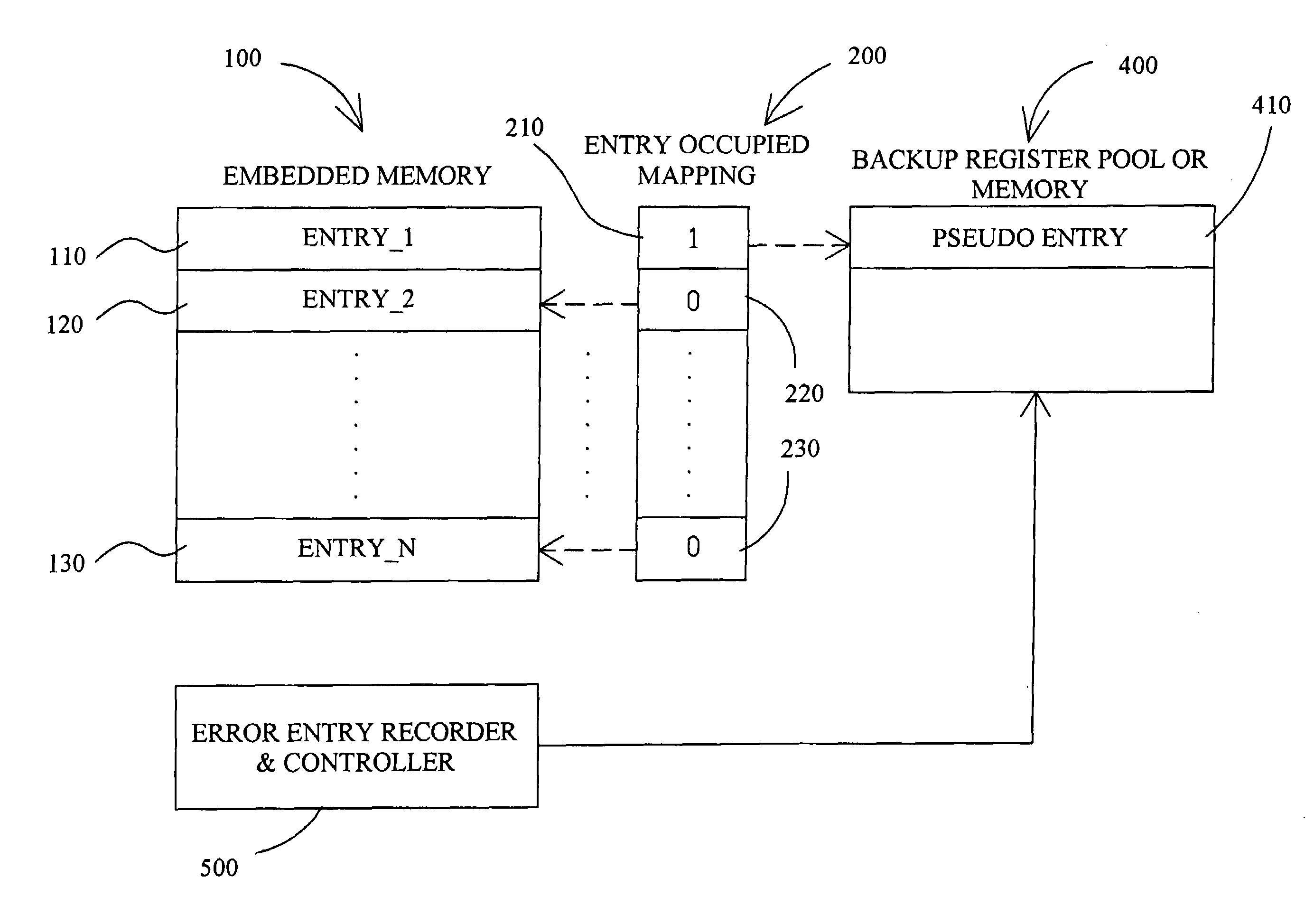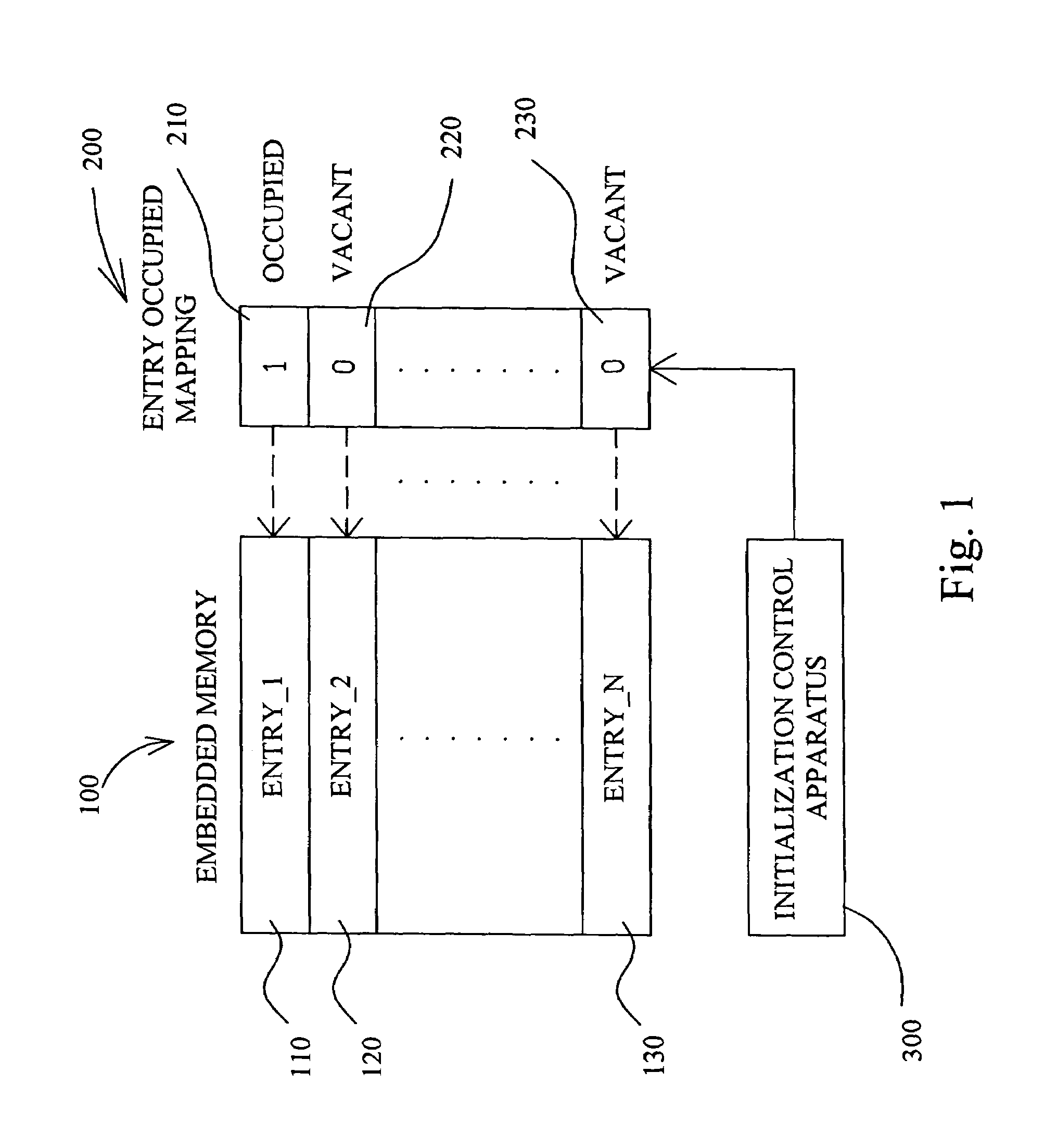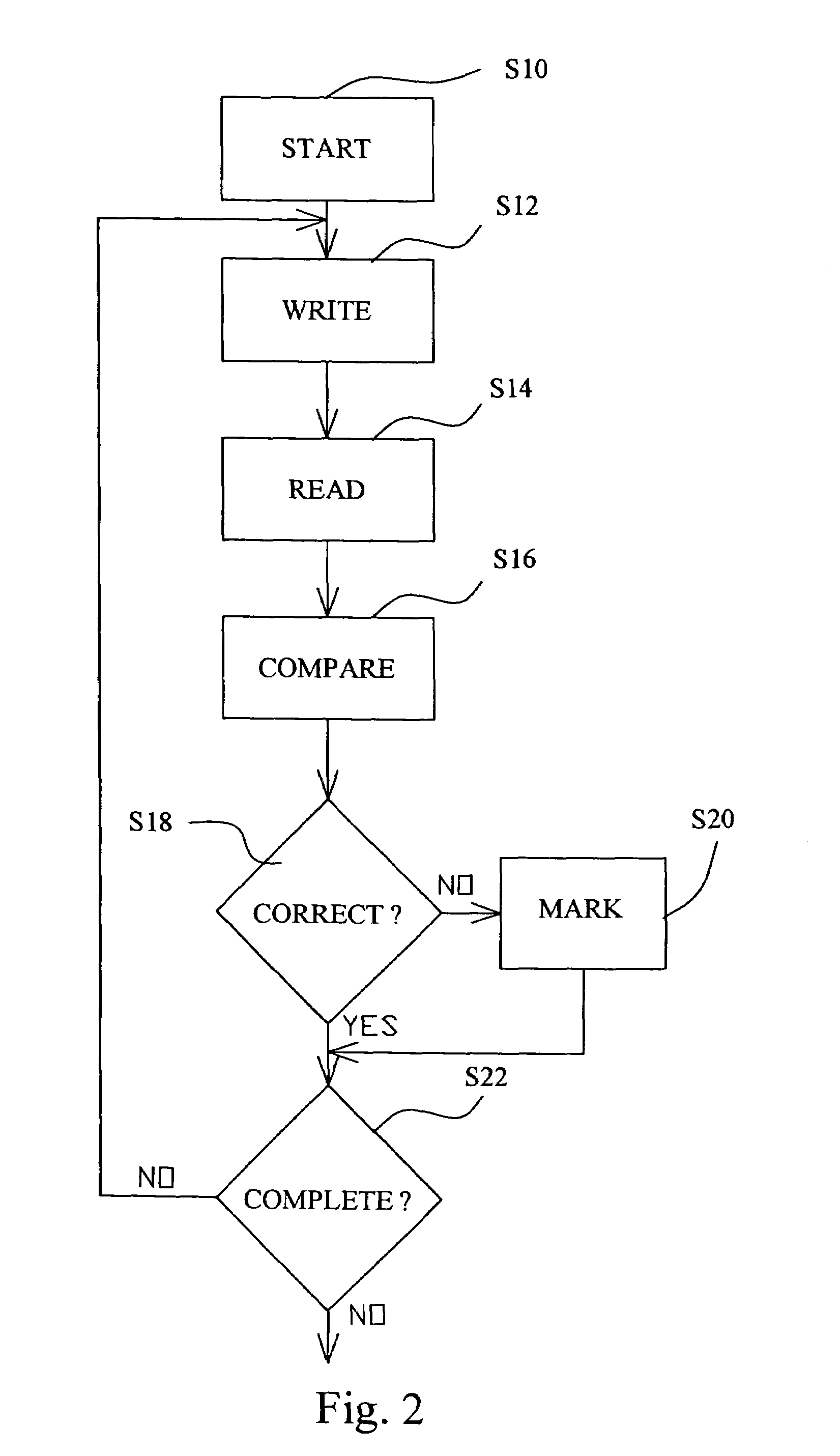Method and apparatus for dynamically hiding a defect in an embedded memory
a defect and memory technology, applied in the field of memory, can solve the problems of unrecoverable loss, inability to dynamically hide a defect in the memory, and inevitably certain percentage of memory with memory defects, and achieve the effect of reducing the memory volum
- Summary
- Abstract
- Description
- Claims
- Application Information
AI Technical Summary
Benefits of technology
Problems solved by technology
Method used
Image
Examples
Embodiment Construction
[0023]A method and apparatus are disclosed to handle defects in a memory, especially in a memory embedded in a chip, from a different point of view, by which the memory defects are hidden so that it looks as it used to be, instead of repairing the memory by fuses or dealing with the memory size, and thereby the user does not know that the memory is defective. The method detects the locations of defective entries by the test procedure already scheduled during a system boot-up, without introducing an additional test procedure as well as repair and retest procedures, and thus it is not necessary to spend lengthy processing time. Furthermore, only simple apparatus is used for marking or recording memory defects, so there is thus no need to include a complex processing circuit. Though it results in memory size reduction in this manner, the invented method and apparatus also make a chip with a defective memory usable instead of needing to be discarded. The invented technique dynamically e...
PUM
 Login to view more
Login to view more Abstract
Description
Claims
Application Information
 Login to view more
Login to view more - R&D Engineer
- R&D Manager
- IP Professional
- Industry Leading Data Capabilities
- Powerful AI technology
- Patent DNA Extraction
Browse by: Latest US Patents, China's latest patents, Technical Efficacy Thesaurus, Application Domain, Technology Topic.
© 2024 PatSnap. All rights reserved.Legal|Privacy policy|Modern Slavery Act Transparency Statement|Sitemap



